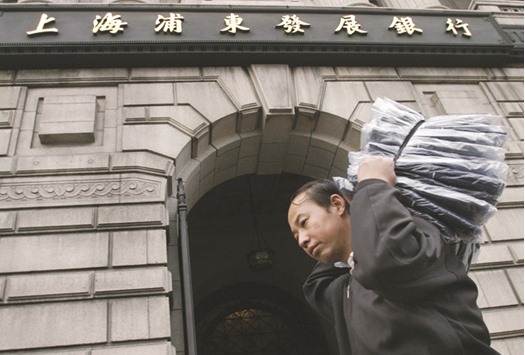Now that China has overtaken the US to be the largest issuer of green bonds, some investors are showing scepticism over a regulatory regime that even allows sales by coal projects.
Chinese electric car and wind-power companies joined banks to raise the equivalent of $8.8bn selling green notes this year, a third of global issuance, Bloomberg data show.
With 95.4% of those offerings denominated in yuan and local standards differing from global ones, there are obstacles for foreign funds.
Clean-coal power stations qualify for the status in China, even though they can conflict with some investors’ mandates.
“We have seen some bonds be issued with only the issuer claiming they are green, rather than any agency certifying the bond as green,” said David Smith, head of corporate governance at Aberdeen Asset Management Asia. “Over time we might see agencies put more prescriptions in place on what constitutes a ‘green’ bond.”
China has been opening its domestic bond market to global investors to help finance the transition of its economy toward services and high technology, and away from smokestack industries. So far, foreign investors own less than 2% of all onshore notes. Standard Life Investments, which has $83bn of bonds under management, hasn’t dedicated time to examining any of the recent Chinese green bonds.
It would need to run them past its own environmental, social and governance criteria.
“It’s not enough that a bond is being labelled ‘green’,” said Samantha Lamb, London-based investment director for credit. “There remains a need for a thorough review of those claims made by global green bond issuers, high governance standards, a mature rating index and full ESG and credit assessment.”
China approved more than 100bn yuan ($15.2bn) of sales of green bonds in the first five months of this year. Shanghai Pudong Development Bank Co was the first to issue 20bn yuan in China’s interbank bond market in January and will choose projects focused on curbing pollution and recycling. The proceeds for Zhejiang Geely Holding Group Co’s notes will finance the development of the TX5, a hybrid battery-powered version of the iconic 1958 black cab, unveiled in October when Chinese President Xi Jinping visited Britain.
Chinese fund managers Ping An Asset Management Co and HFT Investment Management Co declined to comment on whether they plan to create the kind of green-dedicated funds that would push for stricter guidelines.
International green bond investors have strict internal guidelines, said Joseph Jacobelli, senior analyst for Asia Pacific utilities with Bloomberg Intelligence in Hong Kong.
“They would more likely want to use a well-recognised international agency using global standards,” Jacobelli said. “This could make Chinese green bonds purely certified by Chinese organizations perhaps less attractive for international investors.”
While China’s central bank and its green finance committee have been open to global views, regulators are unlikely to impose international guidelines, Mushtaq Kapasi, chief representative for Asia Pacific at International Capital Market Association, which develops voluntary standards for the green bond market, said in a conference in Beijing on June 2.
“That’s a bit unrealistic,” Kapasi said. “It’s a two-way communication. The green bond international guidelines are also heavily influenced by what’s going on in China.”
China’s own special circumstance with high coal reserves could explain why the country promotes the clean use of the fossil fuel.
“Coal currently accounts for about 70% of China’s energy consumption,” said Wang Yao, director at Research Center for Climate and Energy Finance in Beijing. “In the future maybe clean coal will not be supported when clean energy methodologies are more developed.”
Clean coal conflicts with both international standards and the environment-friendly investment mandates of some investors, according to S&P Global Ratings.

A Chinese man hauling goods passes by the front door of Pudong Development Bank in Shanghai. Pudong Development Bank was the first to issue 20bn yuan in China’s interbank bond market in January and will choose projects focused on curbing pollution and recycling.
